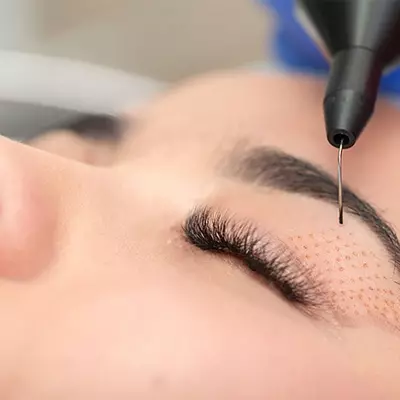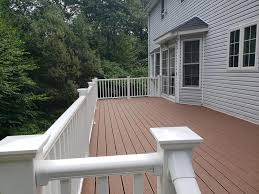If you’ve ever had to conceal your smile or had your dentist tell you that you need your teeth straightened, chances are you’ve found yourself balancing and comparing the advantages and disadvantages of conventional braces and Invisalign. Don’t worry, you’re not alone. Across India, more and more teenagers, working professionals, even parents in their 40s, are taking orthodontic treatment seriously.
And while straight teeth are the ultimate sign of confidence and beautiful smile, for the majority of us, the path to it is filled with so many questions: Are metal braces still the way to go? Is Invisalign really as amazing—or just more costly? Is it worth shelling out more for?
At Dr. Anne’s Aesthetics Dental Clinic, HSR Layout, Bangalore, these are some of the most common conversations one gets to hear from patients. So let’s break this down—not with sales talk, but with a frank, impartial comparison of both options.
How They Look (And Why That Matters)
Let’s be real—appearance matters. Especially in this era of Zoom, weddings, social media, and first impressions.
Metal braces are very noticeable. They’ve been around for decades and while they function really, really well, not everybody loves the look—especially adults. For school-age children, it’s usually no problem. But for a 27-year-old computer consultant who has meetings every day, or a bride who is to be married in six months, noticeable brackets are not necessarily the solution.
Invisalign, however, is constructed of clear plastic and sits over your teeth like a thin mouthguard. Folks will barely know you’re wearing them. That level of discretion is usually a dealbreaker—in the best sense of the word—for most Indian patients.
As Dr. Anne would say, “Many people come to us wanting to have a straight smile but are afraid of how braces will look. When they see what Invisalign is going to look like, you can see the relief on their face.”
How They Work (And What They Can Really Fix)
Braces have been in use for centuries, and that’s why they’ve endured—because they work. Brackets are bonded onto your teeth, and with wires and periodic tightening, they coax your teeth gently into place. They’re particularly suited to difficult cases: really crooked teeth, deep bites, crossbites, and large spaces.
Invisalign is a bit different. You are provided with a series of individually designed clear trays (aligners) to shift your teeth slowly. You wear each for 1–2 weeks before changing to the next. It is very precise, thanks to digital planning and 3D scanning.
For minor to moderate cases—think tiny crowding or spaces—Invisalign can be as good as braces. However, if your case is intricate, Invisalign can need to be augmented with attachments or even combined with braces in certain cases.
Dr. Anne is quite eloquently stated: “We don’t think in terms of one-size-fits-all. Some patients just do just great with Invisalign. Some patients need braces to get the best result. We sit down, we look at the scans, and we determine together what makes the most sense.”
Daily Life: Food, Hygiene, and Comfort
It is here that Invisalign really shines.With braces, eating is slightly more complicated. Sticky foods, crunchy snacks, and even gum chewing are completely off-limits. Brushing your teeth is slightly more inconvenient—you’ll have to use special brushes and gizmos to work around the wires and brackets. And yes, ulcers and soreness are also a possibility, especially during the first few weeks.
With Invisalign, you take out the aligners while eating. So you eat whatever you want—pani puri, popcorn, bhutta, laddoos—without worrying. Just brush your teeth before putting them back. Aligners are smooth and don’t irritate your cheeks and lips. It’s just. easier.
That is all said, though, Invisalign requires discipline. You must wear them 20 to 22 hours a day. Forgetting to wear them or failing to wear them typically equates to delayed results. Braces are fixed, which means that they are working even when you are not even conscious of them.Most parents at Dr. Anne’s clinic choose braces for teens simply because they don’t have to be concerned with whether they are or not wearing the aligners.
Appointments, Timelines, and What to Expect
Both braces and Invisalign typically take 12 to 24 months based on your case. Less complicated cases can be completed in under a year. Braces need to be tightened every 4–6 weeks. Invisalign patients typically go every 6–8 weeks to get new aligners and check in to make sure everything’s on track.
One advantage of Invisalign is that it is predictable—through computer planning, you can also take a glimpse of your projected outcome from the beginning. But in real life, however, both treatments will also require adjustments and tweaking in the process.
Computer scans are part of the initial consultation at Dr. Anne’s office. “We don’t start treatment until the patient has an idea of what they’re in for,” she adds. “Whether it’s 18 months in braces or 12 months in aligners, we believe the process should be as open as the end.”.
The Price Tag and the Broader Context
Now let’s discuss cost. Metal ones are the cheapest, generally costing anything between ₹35,000 and ₹60,000. Ceramic or tooth-colored ones a little more and lingual (rear) ones can reach up to ₹1.2 lakh.
Invisalign is more expensive, ranging from ₹1 lakh to ₹2.5 lakh, depending on the quantity of aligners and the case’s complexity. That’s a significant difference—and not always an easy decision to make.
But to others, Invisalign is an investment in comfort and convenience. To busy professionals, frequent travelers, or individuals with social lives to maintain, convenience and discretion are often worth more than the price.
Dr. Anne also frequently assists patients in balancing pros and cons in the real sense—not only finances, but lifestyle, purpose, and personality as well. EMI facilities or payment schemes can also be made, which makes it somewhat easier on the wallet.
In Brief: What’s Best for You?
Braces or Invisalign? There is no “better” or “worse”–just what works best for you.
If you want the cheapest option and are okay with a noticeable treatment, braces are proven and trusted. If appearance, flexibility, and convenience matter more—and you’re willing to pay to wear your aligners—Invisalign may be your best bet. Whatever you decide, ensure it is from expert recommendations, realistic expectations, and what you feel comfortable with. Dental clinics such as Dr. Anne’s Aesthetics Dental Clinic are assisting patients in making such decisions on a daily basis—without pressure and sales pitch, but genuine guidance. Ultimately, orthodontic treatment is not just straight teeth—it’s health, self-confidence, and making an informed decision that you can feel comfortable with.
Information Courtesy
This information is based on insights provided by Dr. Anne Abraham, the lead dentist at Dr Anne’s Aesthetics Dental Clinic,2nd Floor, Swathi deluxe restaurant building, Panathur Main Rd, Kadubeesanahalli, Panathur, Bengaluru, Karnataka 560103 Dr. Anne specializes in Smile Design procedures, including professional Dental Implant and Orthodontics , and is known for her patient-centered approach and clinical expertise.




